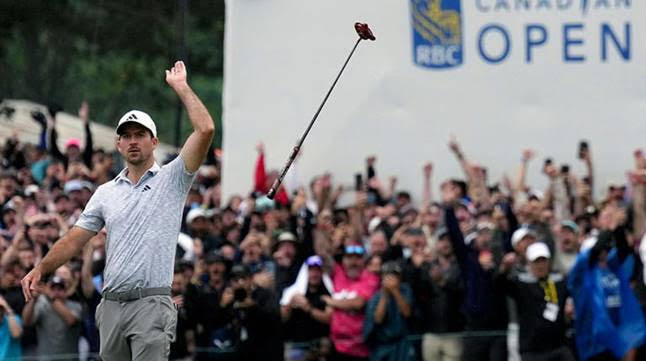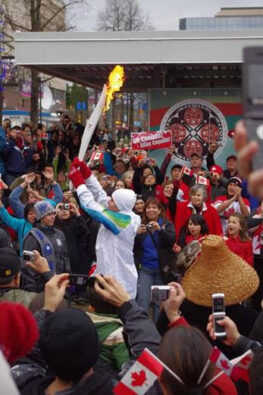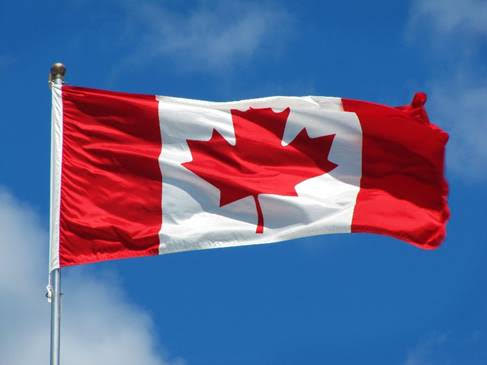
In 1979, a much-admired Fleet Street journalist was hired as sports columnist with the Vancouver Sun and its parent company Southam, which disseminated his prose along its vast network of Canadian newspapers.
Given a broad brush, he painted a portraiture of our country that was a template for those times, and allowed us to see ourselves as others saw us.
James Lawton saw Canada’s rather timid psyche and notorious aw-shucks humility through the lens of sports: how we competed, and how we continued to fail at the highest levels of completion? It was a mystery to both him and us.
He thought we were uncomfortable in winning awards, especially compared to our cocksure neighbours to the south. The one-dimensional image of the gloating winner seemed to jar our natural reserve, which Lawton saw as deferential and apologetic.
Yankee stridency was best summed up in the infamous Nike ad that ran during the 1996 Summer Olympic in Atlanta: “Silver is what they give to the first loser.”
American athletes panned for gold – everything else was rocks and sediment.
Canadians would sing the hallelujah chorus for silver, bronze and even a place in the finals. We literally jumped for joy (pardon the pun) when men’s high jumper Greg Joy scored a runner-up at the ‘76 Summer Games in Montreal.
Our notion of being hospitable hosts was so ingrained, we became the first host nation not to emerge from the Olympics with a gold medal. Our gold-less streak continued at the ’88 Winter Games in Calgary. Even later, when Lawton returned to ‘Ol Blimey’, our nation was still punching below its weight class.
Canadian spirit took another blow at the ’88 Summer Games in Seoul, Korea, when sprinter Ben Johnson won the 100-metre final in a world-record time of 9.79 seconds. Finally, GOLD! And in the premier Olympic event, no less!
Johnson was a delicate mix of biology, physics, genetics, kinetics, physical training and anabolic steroid use – the perfect running machine.
He could cover 100 meters in 9.79 seconds – or 26 miles per hour. At full stride, when both feet were airborne, he looked uncluttered by gravity – he literally flew. One sports reporter of the day called it “heaven-shaking” speed.
Then, on Saturday, September 28, 1988, in a Spartan drug testing room behind the concrete walls of the Seoul Olympic Stadium, Gentle Ben literally pissed it all away: the medal, a world-record, and an estimated $35 million in endorsement deals over the next few years.
The response was fast, furious, and upon reflection, hysterical. ‘The Johnson Affair’ was called a “national embarrassment.” An Ottawa Citizen desk editor penned this immortal headline: “Thanks A Lot, You Bastard.”
Shame and blame spread evenly across the land, and the Dubin Inquiry shook us to the core of our being. It pulled the scab off a large wound, and created a new level of hurt and self-doubt.
By 2004, a group of frustrated sports industry stakeholders had had enough. With Ottawa’s blessing, they pushed a strident game plan called “Own the Podium.” The goal wasn’t rocks and sediment, but a Canadian gold rush.

In our second go ‘round at hosting the Winter Games (Vancouver 2010), we won 26 medals, including 14 gold. Four years later in South Korea, we won 29 in total, and 11 gold. We even finished third overall in the medal count, which put us (drum roll please…) ahead of the damn Yanks.

This unCanadian drive for excellence, transferred easily from amateur to professional sports, especially golf. It topped out this past June at Oakdale Golf and Country Club in Toronto when Nick Taylor, a 35-year-old journeyman from Abbotsford, B.C., won our national men’s title. This ended a 69-year drought between homebrew wins, and consigned Pat Fletcher’s victory at Point Grey Golf Club to the scrapheap of history.
What made Taylor’s heroics so compelling was the dazzling way he went about it. He was the epitome of cool, draining putt after clutch putt, and ending it all when in a playoff against Englishman Tommy Fleetwood, he canned an improbable 72-foot eagle on the 18th green (fourth playoff hole).
It was as if the ball had a honing device attached to it. It looked as it travelled the entire distance from St. John’s to Victoria before falling. Maybe it carried the hopes and dreams and frustrations of a nation because, when it dropped, all Taylor could do was let out a primal scream and toss his putter in the air like the famous Jose Batista bat-flip in the 2015 major league playoffs. This image was so iconic, it is now emblazoned on the new 2024 RBC Canadian Open logo.
Taylor’s moment in the sun gave to Canadians the release that strong liquor gives a repressed man. It was the counterpoint to our famed self-restraint. The response rippled beyond golf. It was tribal. It was anthropological. It was about ending a losing streak that had finally run its course of 69 years.
Nothing is immutable, not even history
Not to an overwrite this (something I’m known to do), but the outpouring of glee after Taylor’s eagle, sent spectators racing madly across the green. It took a comic turn when Adam Hadwin, a fellow Abbotsforder and tour winner, was tackled by an over-zealous security guard as he raced to pour a bottle of bubbly over his friend’s head. This turned it into Caddyshack, the sequel.

It’s been said that a hero is one who performs deeds for the glory of the whole. If that’s true, and I think it is, then Taylor’s heroics are part of a national purging of past disappointments that is cathartic, and puts Gentle Ben’s screw-up in the rearview.
It’s difficult to describe these national moments that undo our past without leaning on some maple syrupy sentimentality. Perhaps Henry Cotton, a three-time British Open champion who in later life became a great golf writer, said it best, when he described the feeling of hitting the shot at just the perfect time.
“Moments of poetry,” he wrote.
This Taylor-made moment is the perfect lead-in to more strutting and bragging about what all our best athletes accomplished in 2023. Consider:
• Canadians continued to dominate at both the NHL and international level in hockey;
• Kitchener’s Jamal Murray, led Denver Nuggets to the NBA title;
• We won our first medal at the World Basketball championships and clinched a berth in the upcoming Paris Olympics. The best player on this team, Shai Gilgeous-Alexander (another NBA superstar), just received the Northern Star Award as our athlete of the year.
• We can still lay claim to the “best athlete on the planet” after Pierce LePage won the decathlon title at the world track and field championships. He edged out another homebrew, Damian Warner, who is the reigning Olympic champ.
• Canada held both international team tennis titles at once: The Billie Jean King Cup (women) and Davis Cup (men).
• Two more members of Team Canada joined Taylor at the winner’s podium, and Brooke Henderson won another title on the LPGA.
• There are so many other wins in other sports, to list them here only wastes more time in getting to my point: we’re damn good, and getting better.
The image of the Canuck athlete as an over-matched gamer and lovable loser, is as archaic as the black and white footage of Fletcher scoring his win in Vancouver in 1954.
The Own the Podium mentality has leaked into other sectors of our society too, especially business. The former CEO of Canada’s Research in Motion (creator of the Blackberry), said for too many years, we weren’t up to snuff in the ultra-competitive world of international business. Jim Balsillie thinks our famous inferiority complex did a flip-flopped after signing the first North American Free Trade Agreement (NAFTA) in the 1990s.
This not only established our sovereignty, but changed the image of Canada as a quaint backwater where hosers in togues and knee-high boots were hewers of wood and drawers of water. In bygone days, we produced primary products like oil, coal, wood, nickel, and the pelts from fur-bearing animals. If it was in, on, or running along the ground, we’d find it, mine it, drill for it, kill it, then send it south across the 49th parallel for manufacturing. We didn’t build anything of significance (except the Avro Arrow), and when we did, we lacked the guts or guile to bring it to market.
For years, sociologists grasped at stray elements that help define us as a nation – fur trading, pea soup, toques, Vimy Ridge, railroads, curling, Don Messer’s Jubilee, Shitt’s Creek, SCTV, Hockey Night in Canada, ice fishing, Timbits, and ehs and effins.
Our recent re-upping of NAFTA 2.0, has created a spillover effect, and this is seen in everything we do, including own very own golf industry network. A series of Economic Impact Studies has benchmarked it as a goliath, which now checks as a $20-billion-a-year sector.
This extreme makeover of the Canadian psyche means we no longer jump for joy when we finish in the Top 10. But the good news for me is that we have managed to retain our image as the ah-shucks, humble-as-hell Canadian athlete.
Taylor was an on-course killer at Oakdale, but he was also magnanimous, self-effacing, and hilarious in victory. Watching his buddy Hadwin go down with a bottle of booze in his hand, is as typical a Canadian moment as you can get, eh?
Great athletes have an untranslatable mastery over their emotions, and when a game, tournament, or gold medal is on the line, meeting or exceeding expectations is now the norm in Canada. This winning attitude was forged in the smithy of training, high-level competition, and being born in a country that is now used to seeing the red and white maple leaf raised in victory as the band plays O Canada.

It becomes clearer by the day that our athletes today are a reflection of who in our hearts we think we are as a people.
Luckily, the late Jim Lawton was around long enough to cover the Vancouver Olympics for his Fleet Street employer.
He marveled at the Canadian gold rush, and wrote about it in semi-wonderment.
So, who are we as athletes?
The equal of anyone else on this planet.
I don’t know about you, but I look forward to 2024 and a few more of those Taylor-made moments of poetry.












